A device to wrap and capture deep sea life like a monster ball is developed

Robot arm " Rotary Actuated Dodecahedron (RAD: Rotating Actuated Dodecahedron )" that captures underwater so that body like jellyfish and deep-sea life does not hurt soft creatures was developed by Wies Biotechnology Institute of Harvard University .
Studying aliens of the deep
https://wyss.harvard.edu/studying-aliens-of-the-deep/
'Underwater Pokéball' snatches up soft-bodied deep dwellers | TechCrunch
https://techcrunch.com/2018/07/18/underwater-pokeball-snatches-up-soft-bodied-deep-dwellers/
You can understand exactly how RAD captures living creatures by actually seeing the following movie.
RAD Sampler: Rotary-actuated device for investigating delicate marine organisms - YouTube
Many creatures inhabit the underwater, especially the deep sea, have soft bodies like jellyfish, for example. However, capturing such delicate creatures alive in the sea has been problematic because of the high level of difficulty to injure or destroy the body of living beings, and the research of deep-sea creatures does not progress very easily.
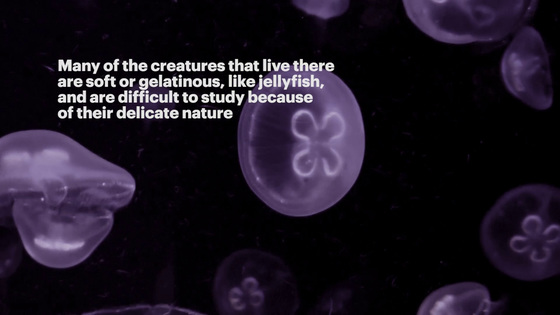
Robot arm developed there is RAD. RAD can capture it like a monster ball that appears in a game "Pocket Monsters" wrapping around underwater creatures and doing no damage.
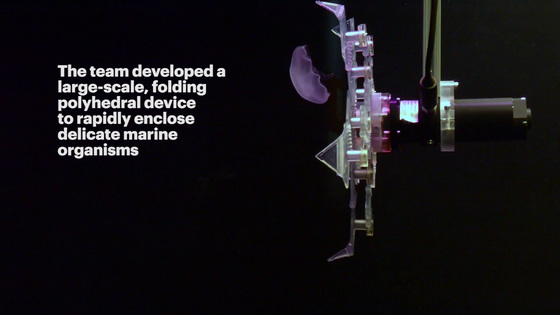
Where we actually capture jellyfish to swim in front of RAD. Five foldable arms called "petals" interlock and slowly close ... ...
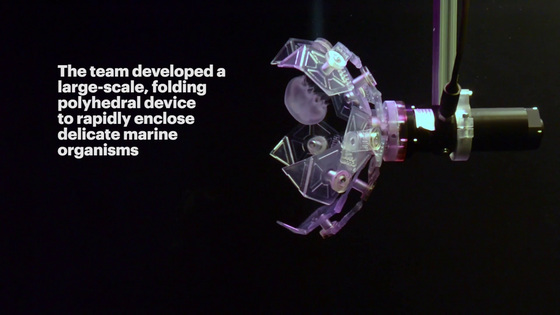
I will lock up jellyfish in the dodecahedron and capture it. Because opening and closing of RAD is done by the shape of petal joints and parts, complicated input and wiring is not necessary. The petals do not touch the living things directly, wrapped around the surrounding sea water, so you can capture deep sea creatures with delicate structure without hurting.
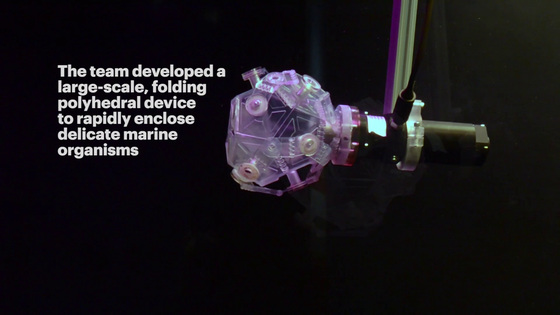
Of course, if you open the petals again as it is, you can escape without hurting the creatures you caught.
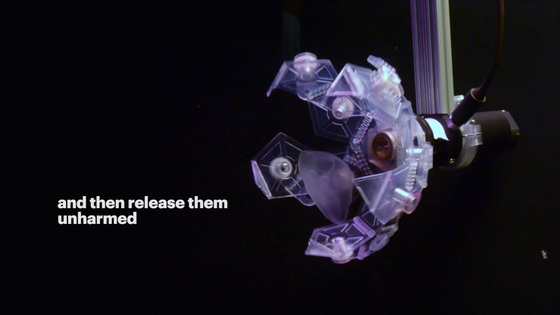
RAD can be installed as a robot arm to a deep sea exploration boat. This is the operation test of this time by installing RAD on a radio controlled unmanned submarine and actually trying to capture a creature.
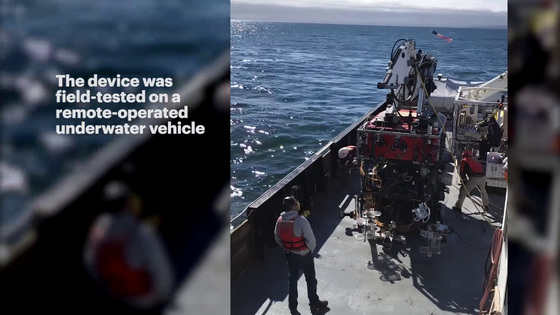
The operation test was carried out about 700 meters deep, but the RAD is designed to withstand the depth of 11,000 meters. It is possible to operate even in the deepest Mariana Trench in the world with depth of 19,11 m.
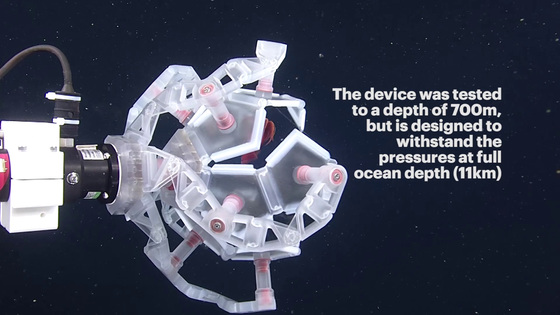
Parts that make up petals are printed with 3D printers. It is made of translucent material, so you can check the appearance of captured creatures from outside the dodecahedron. In the movie you can see how the captured squid swims swiftly in the RAD.
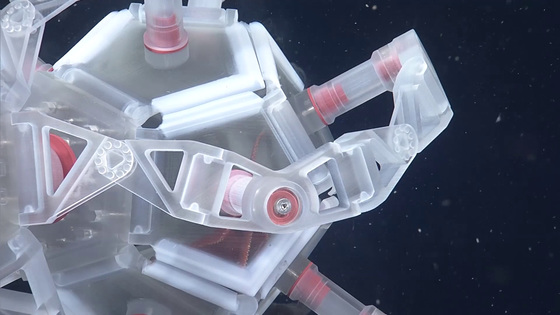
The structure of RAD is as shown in the following figure, it is not so complicated. The five petals that make up RAD are made up of two regular pentagons with arms attached, and it seems that it was designed inspired by origami. RAD is designed as a modular robot arm and all parts of petals have the same shape, so even if parts are damaged by any chance it is possible to repair at low cost.
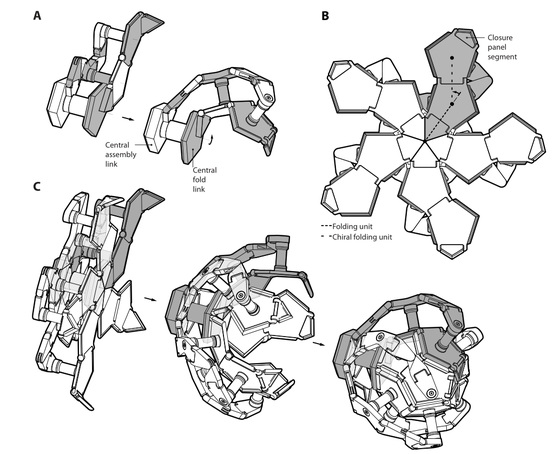
"RAD can be expected to be active not only in the deep sea, but also in environments where it is difficult to operate the device with low gravity, such as the universe," according to Zean Teio of Harvard University Wys Biotechnology Institute. I will. Also, in the future, we are planning a model that not only captures living things but also can add sizes and genomic data by adding cameras and sensors to RAD.
Related Posts:







